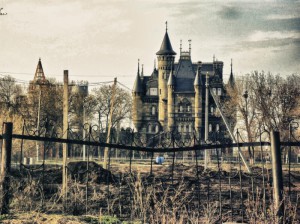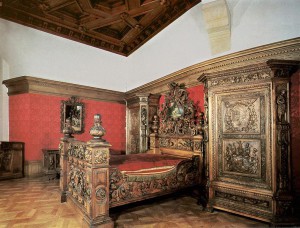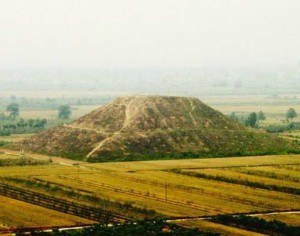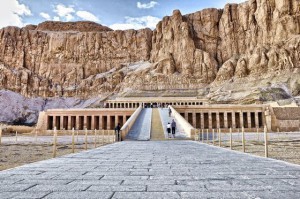The BRONZE AGE (around the 2nd Millennium BC)
 With the improvement of method of production, there are new tools made of copper and bronze. Occurs the first major social division of labor, increasing wealth inequality. Then the craft separated from agriculture, is the second major division of labor. All this played a crucial role in the development of civilization. In the Nile valley, in Mesopotamia and China established a slave system, the first class of the state. All this led to the development of different spheres of human spiritual activity.
With the improvement of method of production, there are new tools made of copper and bronze. Occurs the first major social division of labor, increasing wealth inequality. Then the craft separated from agriculture, is the second major division of labor. All this played a crucial role in the development of civilization. In the Nile valley, in Mesopotamia and China established a slave system, the first class of the state. All this led to the development of different spheres of human spiritual activity.
The overwhelming significance of monumental architecture associated with the development of religious beliefs, the cult of ancestors and nature. These were megalithic structures – menhirs (gr. meg). – a large, lit – rock) – single cigar-shaped stone pillars with a height up to 20 m (Brittany, France); sometimes they stretched in parallel rows for several miles (“the Stone army” – the Caucasus, Armenia; the alley of menhirs in Brittany);
– dolmens – burial structures of the two or four set upright hewn stones covered by a horizontal stone slab (Western Europe, North Africa). Megalithic structures are found in the Crimea and in the Caucasus (5-2 BC);
– cromlechs – more complex megalithic structures: – a round pad with a diameter of thirty meters, a closed four rings of stones set vertically. The outer circle of thirty stone columns, beams soedineniyami on them,- forms a giant likeness of dance. The inner ring composed of small menhirs in the center – a stone slab, possibly an altar. The second ring is of symmetrical blocks, in pairs and covered with composed plates (Stonehenge, southern England, 2 thousand to I. C.)
In the iron age there fortress, fortifications built of huge stone blocks (the area of France, the Balkans), the rich funerary structures.
So the art of the primitive society in the late period of its development have approached the development of the composition, to the creation of monumental architecture and sculpture.
With the emergence of class society deepened the content of the art, expanded its educational and aesthetic opportunities, evolved and developed different types, there are the artists-professionals. This process was accompanied by loss of naïve immediacy, characteristic of the art of primitive society.
ART AND CULTURE OF THE ANCIENT WORLD
Slave system come PA community change-birth, was historically a natural and had, in comparison with the previous epoch, the progressive value. It became the basis for further growth of the productive forces and culture. Religion are made in complex processes of transition from the worship of the beast the vision of the gods, like man. At the same time and in the arts affirms the image of man, glorified his active force, his capacity for heroic deeds.
With all the diversity of historical development of the slave societies of the ancient world, they exhibited two forms: Eastern and antique.
East into a despotic slave States that had sprung up between 4 and 5 years I. E. in the valleys and deltas of the Nile (Egypt), Tigris and Euphrates (ancient States of Mesopotamia) and others.
Antique was characteristic of Greek States-policies, differing social activity of the free population (slave-owning democracy). The ancient art of Ancient Greece and Rome appealed to the masses of free citizens, expressing the basic civic, aesthetic and ethical views of society.





